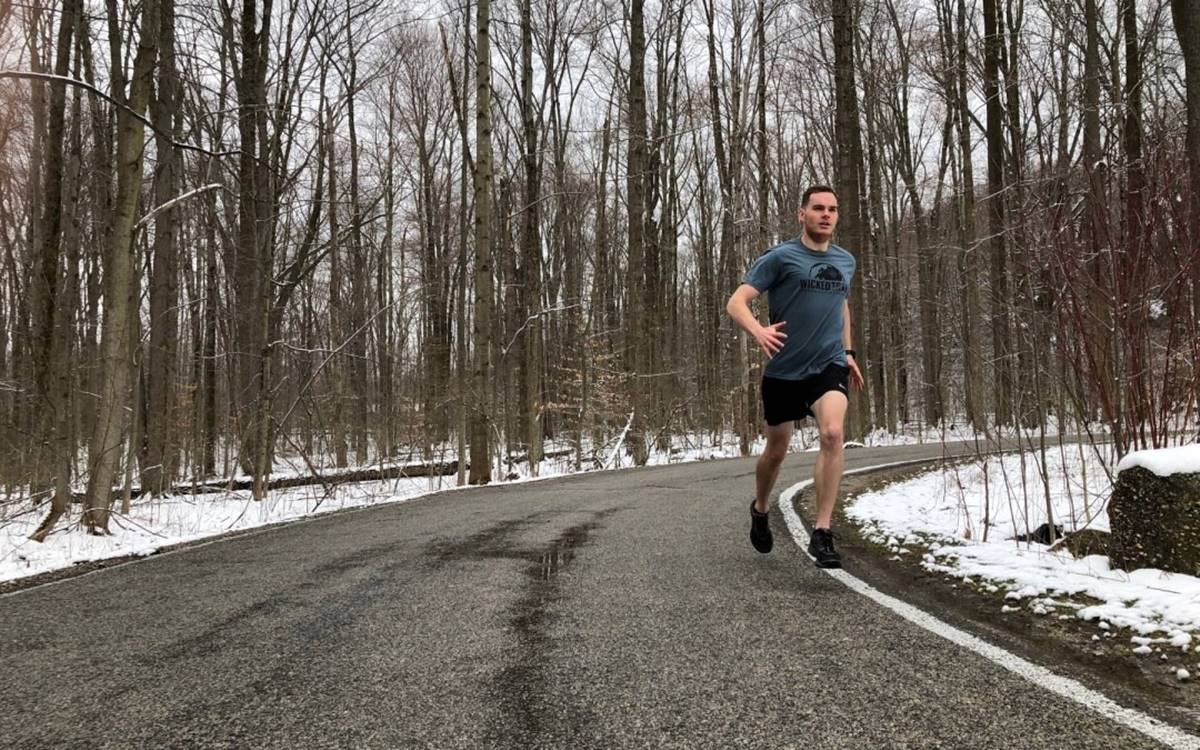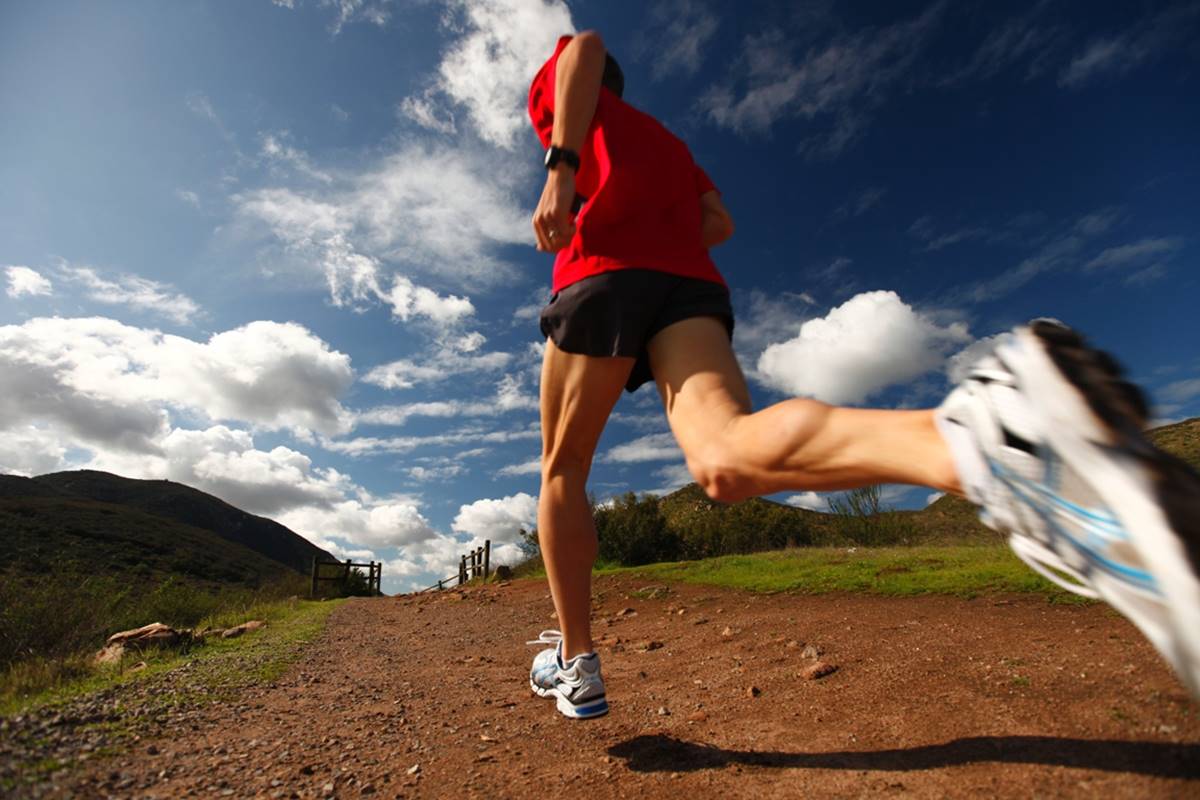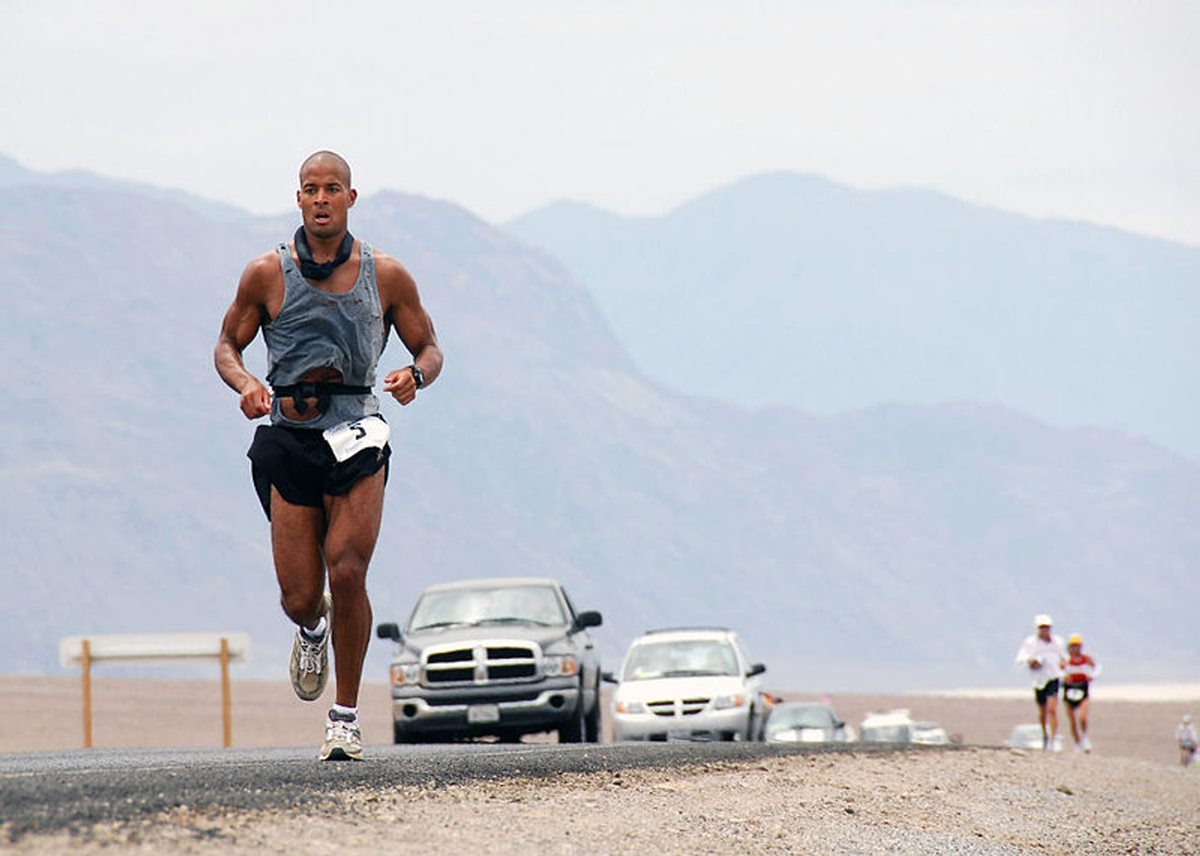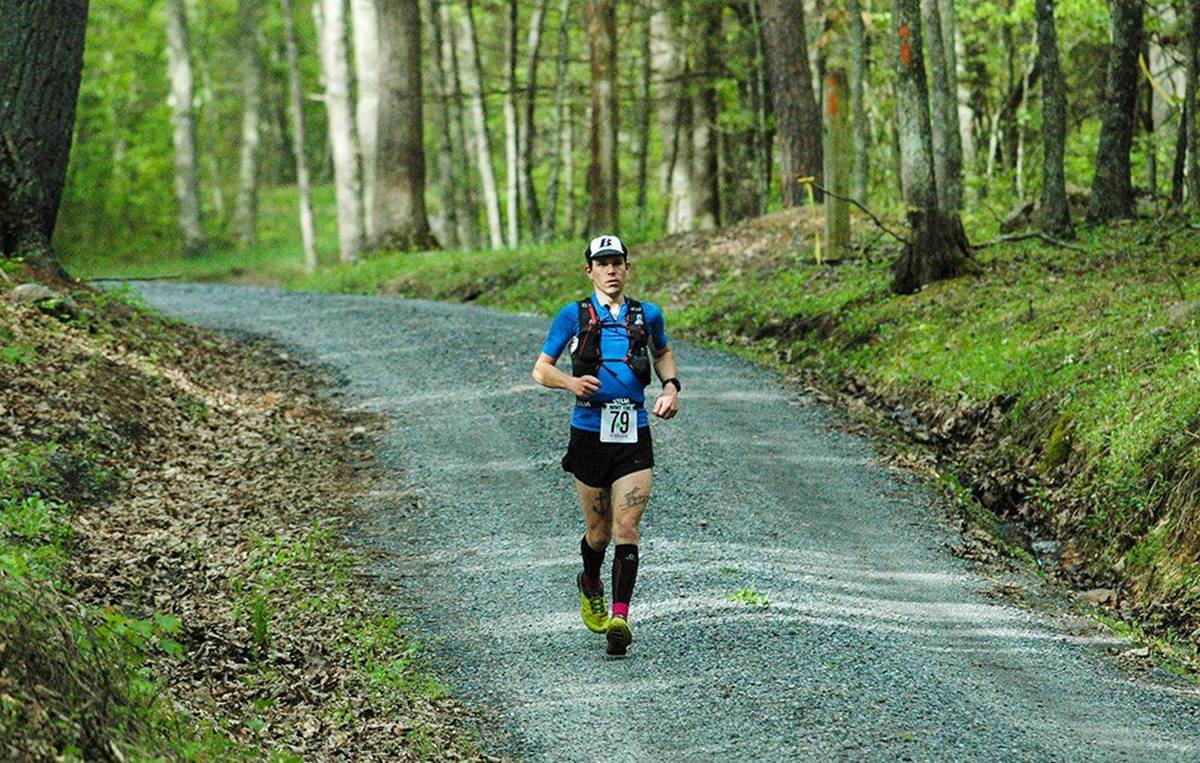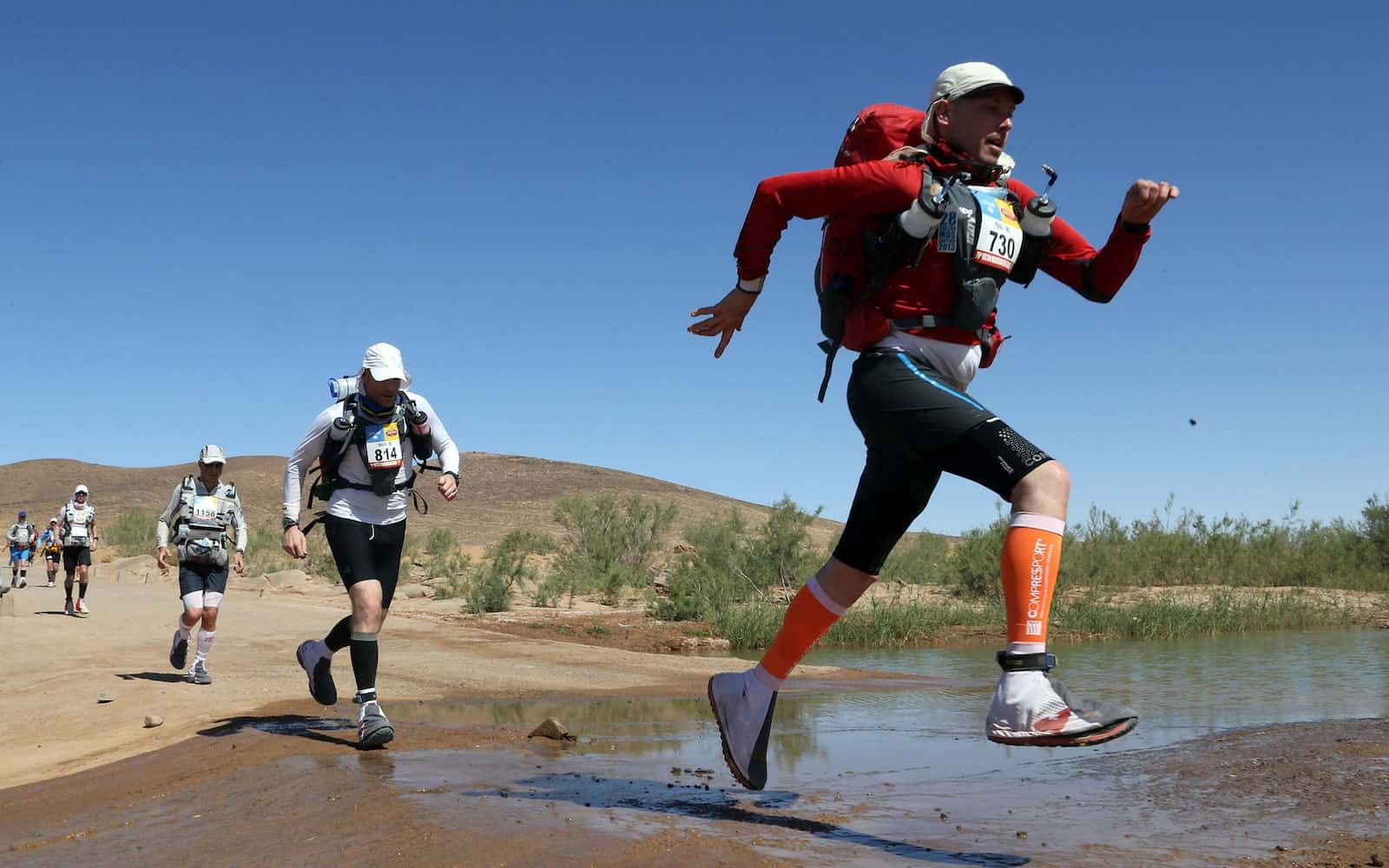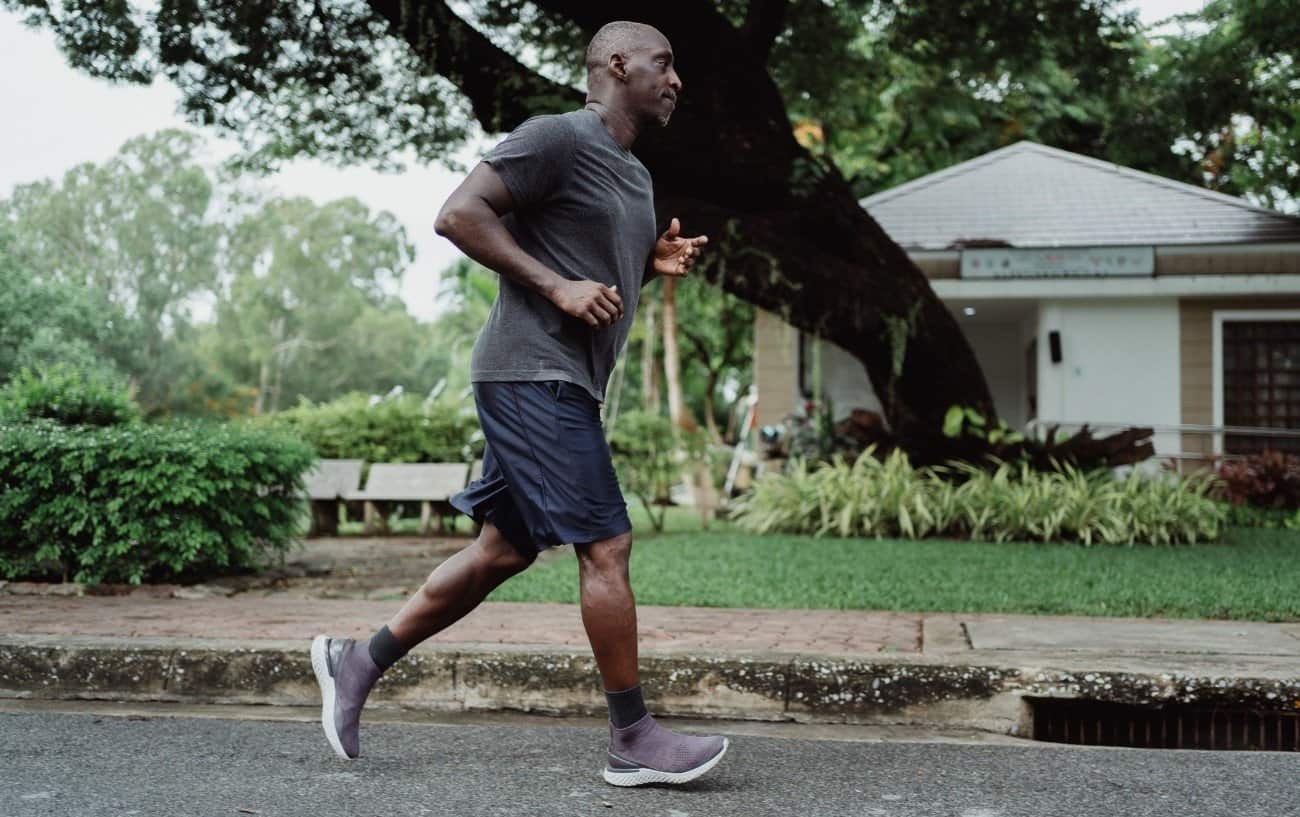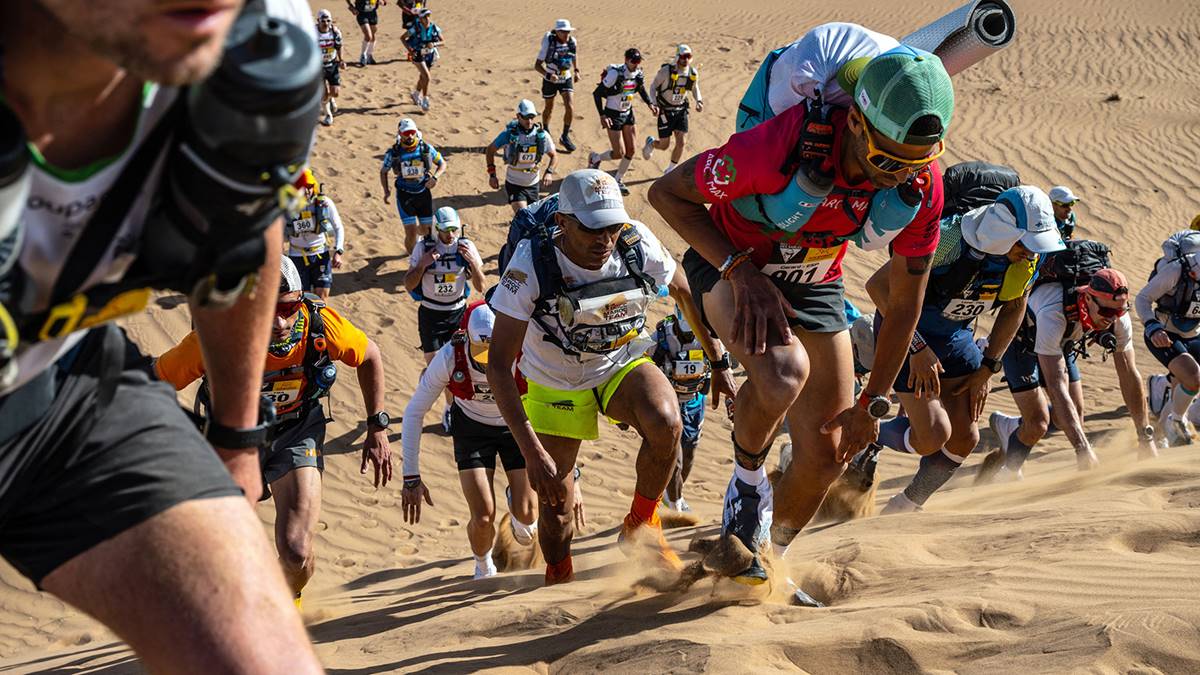Home>Misc>Featured>What Is The Average Pace For An Ultramarathon


Featured
What Is The Average Pace For An Ultramarathon
Modified: January 2, 2024
Discover the average pace for an ultramarathon with our featured guide. Gain insights on training, strategy, and more to excel in these challenging endurance races.
Introduction
Ultramarathons are grueling endurance races that push athletes to their limits. Unlike traditional marathons, which cover a distance of 26.2 miles, ultramarathons stretch beyond that mark, typically ranging from 50 kilometers (31 miles) to 100 miles or more. These races require mental toughness, physical stamina, and meticulous preparation. One important aspect of running an ultramarathon is understanding and managing your average pace throughout the race.
Pace refers to the speed at which a runner covers a certain distance. In an ultramarathon, maintaining a steady average pace is crucial. It helps athletes gauge their progress, distribute their energy effectively, and plan for rest and hydration stops. While individual strategies may vary, having a target average pace can greatly contribute to a successful race.
The average pace for an ultramarathon is influenced by various factors, including the distance covered, the terrain, weather conditions, and the runner’s experience and fitness level. Understanding these factors and how they impact average pace is essential for both beginners and experienced athletes. By having a realistic and achievable average pace goal, runners can tailor their training, pacing strategies, and overall race plan to optimize their performance.
In this article, we will explore the importance of pace in ultramarathons, discuss the factors that affect average pace, delve into the average pace for different ultramarathon distances, and provide training strategies to improve average pace. Additionally, we will examine notable case studies of ultramarathon runners who have achieved impressive average paces. By the end of this article, you will have a deeper understanding of what an average pace entails in the context of ultramarathons and how it contributes to overall race strategy and performance.
Definition of Ultramarathon
An ultramarathon, also known as an ultra, is a running race that goes beyond the traditional marathon distance of 26.2 miles. These races can range anywhere from 50 kilometers (31 miles) to distances well over 100 miles. Ultramarathons can be held on a variety of terrains, including roads, trails, mountains, deserts, and even snow-covered landscapes.
Ultramarathons have gained popularity in recent years, attracting both seasoned marathon runners looking for a new challenge and individuals seeking to push their physical and mental limits. The endurance required to complete an ultramarathon demands a different approach to training, pacing, and nutrition compared to shorter distance races.
There are different types of ultramarathons, each with its own unique characteristics. Some popular variations include:
- 50K: A 50-kilometer ultramarathon is an ideal choice for those looking to step up from marathon distance. It covers a little over 31 miles and typically takes participants through a mix of terrain, including trails and roads.
- 50-Miler: As the name suggests, this ultramarathon covers a distance of 50 miles. Participants should be prepared for the extra mileage and potential elevation changes that come with this race.
- 100K: A 100-kilometer ultramarathon adds even more distance, requiring runners to navigate through challenging terrain for approximately 62 miles. It is a popular choice for those looking to test their limits.
- 100-Miler: Considered the pinnacle of ultramarathons, the 100-mile distance pushes runners to their physical and mental limits. It often involves steep ascents, rugged trails, and the need for strict nutrition and hydration management.
Ultramarathons present a unique set of challenges for runners, as the distance and terrain can be significantly more demanding than a standard marathon. Training for these races requires a gradual build-up of mileage, specific endurance exercises, and mental fortitude to overcome the hurdles that arise during such a long-distance race.
Whether running in a road-based ultramarathon or conquering technical trails in a mountain race, athletes participating in ultramarathons must be prepared for the physical demands and embrace the mental challenges that accompany these extraordinary endurance events.
Importance of Pace in Ultramarathons
Pace plays a crucial role in the success of an ultramarathon. It refers to the speed at which a runner covers a certain distance, and in the context of ultramarathons, maintaining a steady average pace is essential for several reasons.
One key reason for considering pace is to gauge progress. Ultramarathons are long and demanding races that require runners to pace themselves strategically. By tracking their average pace, athletes can assess how well they are progressing and whether they are on track to reach their goals. This helps prevent the risk of starting too fast, which can lead to exhaustion and burnout later in the race.
In addition to monitoring progress, maintaining a steady average pace allows runners to distribute their energy more effectively. Ultramarathons can be physically and mentally draining, so it’s important to conserve energy throughout the race. By aiming for a consistent pace, runners can avoid sudden surges or drastic drops in speed that may deplete their energy reserves prematurely.
Pace also plays a crucial role in planning for rest and hydration stops. Ultramarathons often involve aid stations along the course where runners can refuel, hydrate, and take short breaks. By knowing their average pace, runners can plan their stops in advance, ensuring they make the most of these opportunities without compromising their overall performance.
Furthermore, understanding average pace helps in adjusting race strategies. Depending on the distance, terrain, and weather conditions, runners may choose to adopt different strategies during the race. For example, in hilly or challenging terrain, it might be more beneficial to adjust the pace accordingly to accommodate for the added difficulty. A consistent average pace gives insight into how to adapt and make the necessary adjustments to achieve the best performance.
Finally, pace can have a psychological impact on runners. Ultramarathons are mentally demanding, and a steady average pace can provide a sense of control and confidence. It serves as a guide, helping runners maintain focus and motivation throughout the race.
Overall, the importance of pace in ultramarathons cannot be overstated. It allows runners to track their progress, distribute their energy effectively, plan for rest and hydration, adjust race strategies, and maintain mental focus. By understanding and managing average pace, athletes can optimize their performance and increase their chances of finishing strong in these challenging endurance races.
Factors Affecting Average Pace
Several key factors can significantly impact the average pace of an ultramarathon. Understanding and considering these factors is crucial for runners in optimizing their performance and managing their race strategy effectively. Let’s take a closer look at some of the factors that can influence the average pace in an ultramarathon.
1. Distance: The distance covered in an ultramarathon is one of the primary factors affecting average pace. As the distance increases, runners often adopt a more conservative pace to ensure they can sustain their efforts over a prolonged period. Long-distance ultras, such as 100-milers, require a slower average pace compared to shorter races like 50-kilometers.
2. Terrain: The terrain of the race course plays a significant role in determining average pace. Technical trails, steep ascents, and challenging downhill sections can slow runners down, while flatter and smoother surfaces allow for a faster pace. Runners must adjust their strategy and pace according to the specific terrain they will encounter.
3. Weather conditions: Weather conditions, including temperature, humidity, and wind, can significantly impact average pace. Hot and humid conditions can lead to increased fatigue and slower times, while cold weather may require additional layers of clothing and affect overall speed. Runners must be prepared to adapt their pace based on the prevailing weather conditions.
4. Elevation: The amount of elevation gain and loss on the race course can have a substantial impact on average pace. Uphill sections require more effort and can slow down runners, while downhill stretches can allow for faster speeds. Runners must factor in the elevation profile and adjust their pace accordingly.
5. Runner’s fitness and experience: The fitness level and experience of the runner are integral factors influencing average pace. Well-trained athletes with a strong endurance base are likely to maintain a faster average pace compared to those who are less experienced or have not adequately prepared for the demands of the ultramarathon.
6. Nutrition and hydration: The fueling and hydration strategy employed by runners can affect their average pace. Without proper nutrition and hydration, runners are more likely to experience fatigue and slower times. Adequate intake of energy gels, fluids, and electrolytes throughout the race can help maintain a steady pace.
7. Mental and psychological factors: The mental resilience, focus, and determination of the runner can impact average pace. Ultramarathons require mental fortitude, and a positive mindset can help runners push through challenging moments and maintain a consistent pace.
These are just a few of the factors that can influence average pace in an ultramarathon. Understanding how each of these factors can affect performance allows athletes to make informed decisions, adjust their race strategy, and ultimately optimize their average pace for a successful race.
Average Pace for Different Ultramarathon Distances
The average pace for ultramarathons varies depending on the distance covered. Each distance presents its own challenges and requires runners to adjust their pace accordingly. Here, we will explore the average pace for different ultramarathon distances to give you a better understanding of what to expect when tackling these races.
50 kilometers (31 miles): The average pace for a 50-kilometer ultramarathon can vary depending on the terrain, elevation, and the runner’s experience. On flatter terrain, experienced runners may maintain an average pace of around 8 to 10 minutes per mile (or 5 to 6 minutes per kilometer). However, courses with more technical trails or significant elevation gain can result in a slightly slower average pace of around 10 to 12 minutes per mile (or 6 to 7 minutes per kilometer).
50 miles: In a 50-mile ultramarathon, the average pace tends to be slightly slower than a 50-kilometer race due to the increased distance. On moderate terrain, experienced runners typically aim for an average pace of 10 to 12 minutes per mile (or 6 to 7 minutes per kilometer). However, the pace may vary significantly based on the difficulty of the course and the individual runner’s abilities.
100 kilometers (62 miles): Running a 100-kilometer ultramarathon requires additional endurance and mental strength. The average pace for a 100-kilometer race usually ranges from 10 to 12 minutes per mile (or 6 to 7 minutes per kilometer). However, it’s important to note that the terrain and elevation gain can considerably impact the average pace, with more technical courses often resulting in slower times.
100 miles: Considered the ultimate challenge in ultramarathons, the average pace for a 100-mile race tends to be slower compared to shorter distances. Maintaining a steady pace becomes crucial in managing energy levels and avoiding burnout. On average, experienced runners aim for a pace of 12 to 15 minutes per mile (or 7 to 9 minutes per kilometer) in a 100-mile ultramarathon.
It’s important to remember that these average pace ranges are not definitive and can vary based on individual abilities, race conditions, and other factors discussed earlier. Additionally, many ultramarathon races have cut-off times, so pacing strategies should also consider the time constraints imposed by these limits.
Understanding the average pace for different ultramarathon distances can help runners set realistic goals, plan their training, and develop effective pacing strategies. It’s important to consider your own abilities, the course terrain, and the specific race conditions when determining your target average pace.
Training Strategies to Improve Average Pace
To improve your average pace in an ultramarathon, it’s essential to incorporate specific training strategies into your preparation. These strategies focus on building endurance, increasing speed, and improving overall performance. Here are some effective training strategies to help improve your average pace:
1. Gradual mileage buildup: Increase your weekly mileage gradually to build endurance and prepare your body for the demands of an ultramarathon. Gradual mileage increase helps prevent injuries and allows your body to adapt to the higher distances you’ll be running.
2. Long runs: Include long runs in your training regimen to simulate the duration of an ultramarathon. Start with shorter distances and gradually increase the duration and distance of your long runs. This helps build endurance and mental resilience needed for the race.
3. Speed work: Incorporate speed work sessions, such as intervals, tempo runs, and fartlek workouts, to improve your overall speed and enhance your ability to sustain a faster pace. These workouts help improve anaerobic threshold and increase running efficiency.
4. Hill training: Include hill repeats and hill workouts to improve strength and power. Ultramarathons often involve significant elevation gain, and hill training prepares your muscles and cardiovascular system to tackle uphill sections more efficiently.
5. Cross-training: Engage in cross-training activities, such as cycling, swimming, or strength training, to build overall fitness, strengthen muscles, and prevent overuse injuries. Cross-training helps improve endurance, maintain consistency in training, and provides variety to your workouts.
6. Nutrition and hydration: Practice your race day nutrition and hydration strategy during long training runs to optimize your fueling and hydration plan. This helps prevent energy depletion and allows you to maintain a more consistent pace throughout the race.
7. Mental preparation: Ultramarathons require mental fortitude, so incorporate mental training techniques into your routine. Practice visualization, positive affirmations, and mindfulness to strengthen your mental resilience and focus during challenging moments in the race.
8. Practice race pacing: During your training runs, practice running at your target race pace to familiarize yourself with the effort required and to improve your ability to maintain a steady pace. This also helps you gauge your progress and make adjustments to your pacing strategy if needed.
Remember, improving your average pace in an ultramarathon takes time and consistent effort. Listen to your body, prioritize recovery, and avoid overtraining. It’s essential to strike a balance between pushing yourself and avoiding injury. Consult with a coach or experienced ultramarathoner to tailor a training plan that suits your abilities and goals.
By incorporating these training strategies into your routine, you can steadily improve your average pace and enhance your performance in ultramarathons.
Case Studies: Notable Ultramarathon Paces
Examining the paces achieved by notable ultramarathon runners can provide valuable insights into what is possible and inspire us to push our own limits. Here are a few examples of impressive ultramarathon paces recorded by exceptional athletes:
Kilian Jornet: Kilian Jornet, a well-known ultrarunner, has achieved remarkable average paces in his races. In 2011, he set a new course record in the Western States Endurance Run, a 100-mile race, with an average pace of 8 minutes and 4 seconds per mile (or 5 minutes per kilometer). This astounding pace showcases his exceptional speed and endurance.
Courtney Dauwalter: Courtney Dauwalter, another notable ultrarunner, has established herself as one of the top female athletes in the sport. In 2017, she won the Moab 240, a 240-mile race, with an average pace of approximately 14 minutes per mile (or 9 minutes per kilometer). Her ability to maintain a consistent pace over such a prolonged distance is a testament to her incredible stamina and endurance.
Zach Bitter: Zach Bitter holds multiple impressive records, including the world record for the 100-mile track event. In 2019, he completed this distance with an average pace of 6 minutes and 48 seconds per mile (or 4 minutes and 14 seconds per kilometer), showcasing his extraordinary speed and endurance.
Ann Trason: Ann Trason, a legendary ultrarunner, achieved numerous remarkable paces throughout her career. One notable example is her performance in the 1994 Western States Endurance Run, where she set a course record with an average pace of 8 minutes and 55 seconds per mile (or 5 minutes and 33 seconds per kilometer) over the 100-mile distance.
It’s important to recognize that these paces are incredibly fast and set by highly experienced and trained athletes. They have dedicated years to their craft and possess exceptional abilities. However, these case studies can serve as inspiration for aspiring ultrarunners and highlight what can be achieved with proper training, strategy, and dedication.
It is essential to set realistic goals and focus on personal improvement rather than comparing oneself to elite athletes. Each person’s journey is unique, and progress should be celebrated at every level.
By studying the achievements of notable ultramarathon runners, we can gain insights into the potential of the human body and draw inspiration from their remarkable paces. These athletes exemplify the extraordinary possibilities in ultrarunning and motivate us to continuously push our own boundaries.
Conclusion
Understanding the significance of average pace in ultramarathons is essential for maximizing performance and achieving personal goals. Whether you are a seasoned ultrarunner or just getting started, factors such as distance, terrain, weather conditions, and your own fitness level will influence your average pace. It is crucial to set realistic pace goals that align with the demands of the race and your own abilities.
Developing training strategies focused on building endurance, increasing speed, and improving overall performance is key to improving average pace. Gradual mileage buildup, long runs, speed work, hill training, and cross-training are all vital components of a well-rounded training plan. Proper nutrition and hydration, as well as mental preparation, play integral roles in maintaining a consistent pace throughout an ultramarathon.
Examining the notable paces achieved by ultramarathon runners can inspire and motivate us to push our limits. Their remarkable achievements reflect the potential of the human body and showcase the extraordinary possibilities in ultrarunning. However, it is important to remember that everyone’s journey is unique, and progress should be celebrated at every level.
In conclusion, understanding average pace, incorporating effective training strategies, and drawing inspiration from notable athletes can help you improve your average pace in ultramarathons. Embrace the challenges, stay disciplined, and continue to push your boundaries in pursuit of your ultramarathon goals. Whether you are aiming to finish your first 50K or set a new personal record in a 100-mile race, maintaining a steady average pace will contribute to a rewarding and successful ultramarathon experience.
